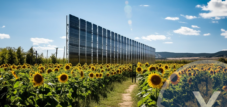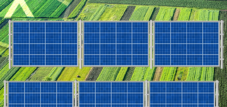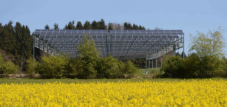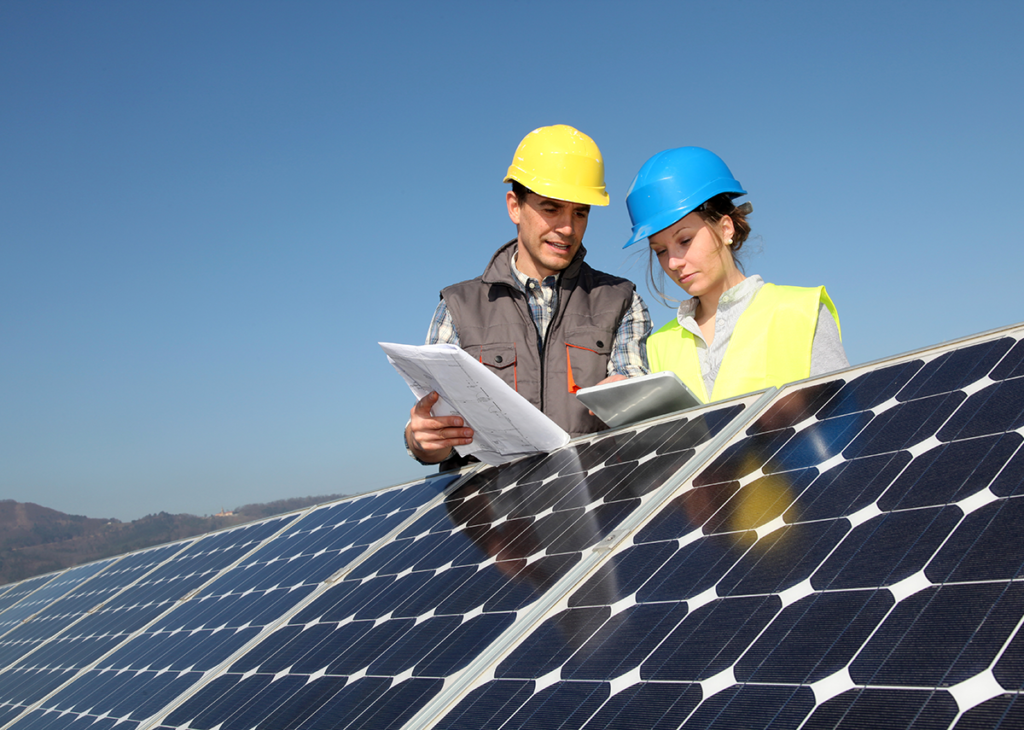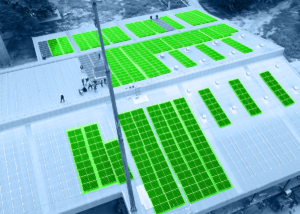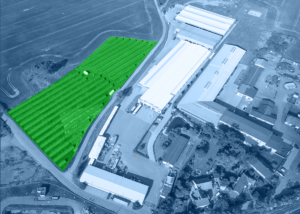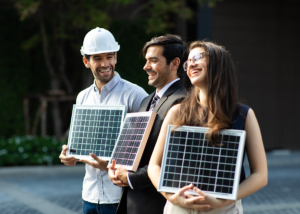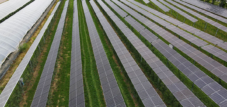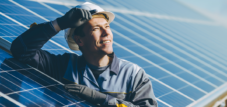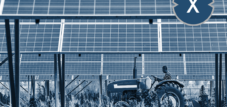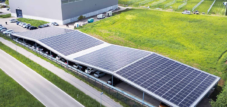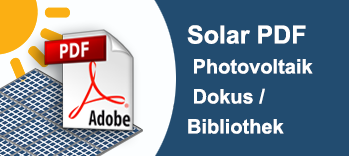The construction of a photovoltaic (PV) ground-mounted system or an agri-photovoltaic (agri-PV) system - planning and installation with Xpert - What do I have to consider?
Language selection 📢
Published on: May 14, 2024 / update from: May 14, 2024 - Author: Konrad Wolfenstein
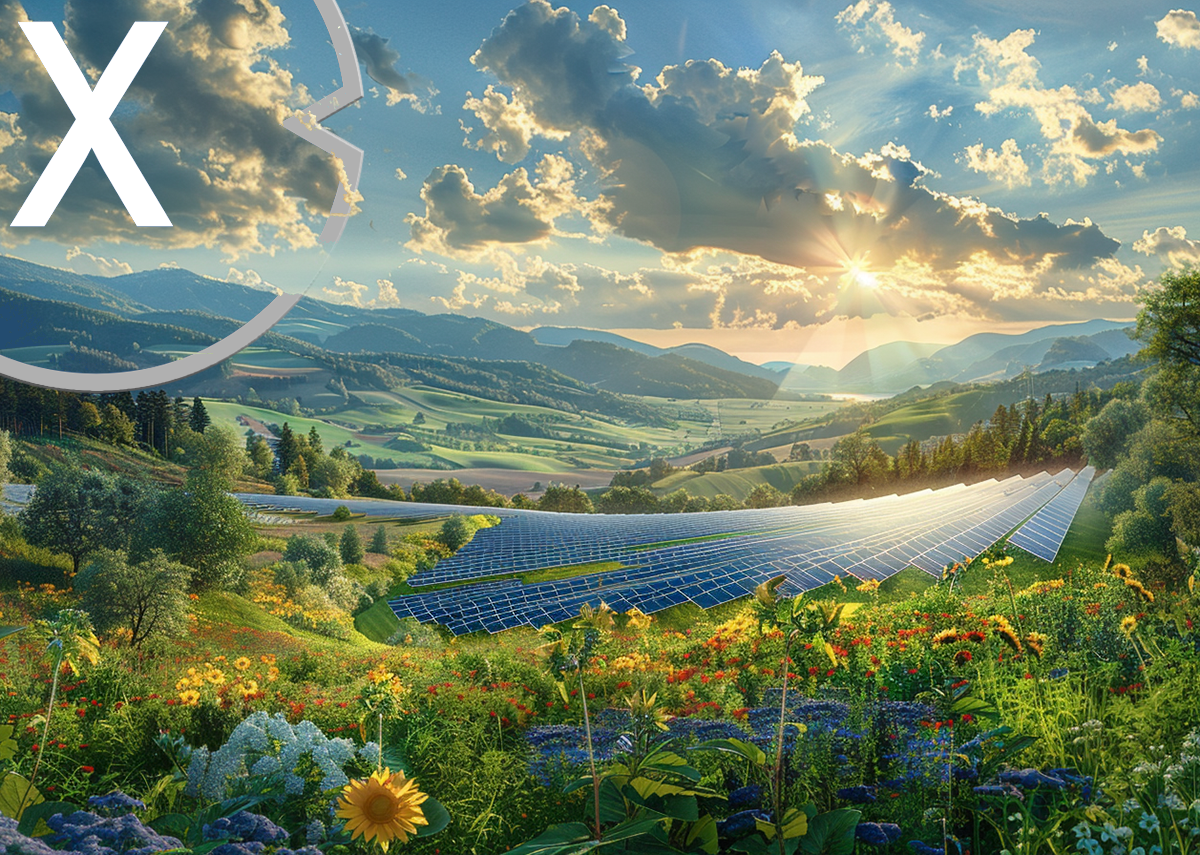
The construction of a photovoltaic (PV) ground-mounted system or an agri-photovoltaic (agri-PV) system - Image: Xpert.Digital
⚡️🚜 Steps to success How to realize your PV or Agri-PV system with Xpert.Solar
📚🌞 Expert tips for building photovoltaic systems in open fields and in agriculture
Building a ground-mounted photovoltaic (PV) system or an agri-photovoltaic (agri-PV) system that combines agriculture and solar energy production is a complex undertaking. This requires thorough planning, obtaining numerous permits and close cooperation with various authorities. Below we outline a guide that outlines important steps and considerations on the way to realizing such projects.
🌞 Analysis and pre-planning
Comprehensive analysis and planning is essential before the project starts. This includes:
Location analysis
Exploration of geographical, climatic and soil conditions. For Agri-PV, the suitability of the location for dual use must also be checked.
Yield forecast
An initial estimate of potential energy output based on solar radiation and other local conditions.
🛂 First contact with the authorities
The first official step is to contact local authorities to discuss the feasibility of the project. It is advisable to collect as much information as possible at this stage in order to give the authorities a comprehensive overview.
📜 Obtaining advance commitments
Before the actual approval phase, it can be helpful to obtain advance approvals or preliminary decisions from the responsible authorities. These provide information about building regulations or other relevant requirements for the project.
📚 Carrying out necessary studies and reports
In order to successfully obtain approvals, extensive studies and reports are often required, including:
Environmental impact assessments (EIA)
These examine the extent to which the planned project affects the local ecosystem.
Related here:
Species protection reviews
Particularly in the case of open-space systems, it is important to determine to what extent locally protected species are affected.
🏗️ Submission of the building application
🇩🇪 Building permit process
The building application forms the core of the approval process. All previously mentioned studies, reports and detailed plans of the facility must be enclosed.
📢 Public participation
In many cases, formal public participation is required. Residents and other interest groups have the opportunity to view the plans and, if necessary, raise objections.
📃 Approval phase
After the building application has been submitted and made public, the authorities will check all documents. This may take several months and additional touch-ups or information may be required. For agri-PV projects, for example, close coordination with agricultural authorities may be necessary.
💡 Securing grid connection and feed-in tariffs
🇩🇪 Connection and support
The grid connection should be clarified in parallel with the approval process. It is also advisable to find out about existing funding opportunities and feed-in tariffs for solar power and to apply for them early on.
🚀 Construction and commissioning
🇩🇪 Implementation and activation
With the approval in hand, construction of the facility can begin. It is important to choose an experienced partner for the implementation and to ensure compliance with all technical and safety-related regulations during the construction phase. After completion, commissioning follows, which must also be approved by the responsible authority.
🛠️ Maintenance and operation
After successful commissioning, the operating phase begins. Regular maintenance is crucial to ensure the long-term efficient operation of the system. For Agri-PV systems, this also means continuously monitoring and adjusting the effects on agricultural use.
☀️🔄 Solar energy for sustainable land use: The path to successful open space and agri-PV projects
The construction of a ground-mounted photovoltaic or agri-PV system is a multi-step process that requires careful preparation and coordination. In addition to the technical and economic aspects, environmental compatibility and acceptance among the population also play an important role. Through early planning, transparent communication and the involvement of all relevant interest groups, the potential of these innovative energy projects can be optimally used to contribute to the energy transition and sustainable land use.
📣 Similar topics
- 💼🌱 Effective strategies for getting your photovoltaic or agri-PV system approved
- 🌍☀️ The Role of Solar Energy in Sustainable Agriculture: An Introduction to Agri-PV
- 📈🌞 Maximize the yield of your photovoltaic system: From location analysis to yield forecast
- 🤝🌾 Collaboration as a success factor: How to communicate effectively with authorities on your PV project
- 📜🛠️ Studies and reports: Essential steps on the way to approval for your PV system
- 🏗️💡 The building application as the key to success: Tips for photovoltaic open space and agri-PV systems
- 🌳🔍 Species protection and PV systems: Finding a balance between energy production and nature conservation
- 🔌💶 Funding options and feed-in tariffs for solar power: How to ensure the profitability of your project
- 🛠️🚜 Operation and maintenance of photovoltaic systems: Best practices for longevity and efficiency
- 🗨️📢 Public Participation: A key element for community acceptance of PV projects
#️⃣ Hashtags: #Solarenergy #SustainableAgriculture #Photovoltaics #Energytransition #AgriPV
🚜🌞 Xpert.Solar as a reliable partner

Xpert.Solar as a reliable partner for all types of solar systems, whether PV ground-mounted systems, Agri-PV and many more - Image: Xpert.Digital
📚 Xpert.Solar offers comprehensive services in all phases of the project, from the initial consultation through planning and installation to maintenance and monitoring of the system. Having a professional partner at your side ensures that all technical and administrative challenges are mastered professionally and the system performs optimally.
Photovoltaic systems, especially ground-mounted and agri-photovoltaic (agri-PV) systems, play a crucial role in the transformation to a more sustainable and ecological energy supply. At a time when reducing CO2 emissions and combating climate change are at the top of the global agenda, such projects are increasingly becoming the focus of governments and companies. Companies like Xpert.Solar are indispensable partners when it comes to planning, installing and maintaining these innovative energy generation systems.
🌱 Open-space systems vs. agri-photovoltaics
🌿 Comparison of concepts
Ground-mounted systems are large solar parks that are built on areas not used for other purposes. They offer the advantage that they can usually be made larger than roof systems and thus produce more electricity. In contrast, agri-photovoltaics (agri-PV) combines solar energy production with agricultural use of the land. This concept offers the opportunity to maximize land efficiency and provides farmers with an additional source of income. Plants grown under the solar panels benefit from the moderated microclimate, which can lead to improved growth.
🔍 Ensure efficiency and safety
Regular monitoring and maintenance are essential to ensure the longevity and efficiency of a photovoltaic system. Modern technologies allow performance to be monitored in real time and to react quickly to possible disruptions. Xpert.Solar offers specialized services to maximize system efficiency over its entire useful life.
📌 Other relevant topics on agri-photovoltaics (agri-PV)
🌱🌱🌞 Build or buy a solar system or solar park on a solar field? Investment advice with Xpert.Solar
Funding options for solar fields and solar parks: According to the Renewable Energy Act, solar systems are eligible for funding if they meet certain requirements. There are three options for which EEG funding is possible: conversion areas, sealed areas and agriculturally disadvantaged areas. What are the requirements for EEG funding?
More about it here:
📊🌦️ Location analysis and climatic conditions: Their influence on solar systems
🌍🔍 Obtaining permits for the construction of a photovoltaic system, be it a ground-mounted system or an agri-PV system that combines agriculture and solar energy production, is a complex and often time-consuming process. This not only includes submitting various applications and documents, but also carrying out extensive studies and reports to check the compatibility of the project with local conditions, regulations and legal requirements.
📍 1. The importance of location analysis
First, it is crucial to conduct a thorough site analysis. This analysis is the foundation of the entire project and has a significant influence on the decision as to whether and in what form a photovoltaic system can be implemented. When examining the site, a variety of factors are taken into account, including geographical location, climatic conditions, slope and orientation of the terrain, and local flora and fauna. These factors are important not only for the efficiency and potential energy yield of the plant, but also for assessing the environmental impact of the project.
🌱 2. Examination of disadvantaged areas
A specific aspect that is particularly important when planning open space facilities is the investigation of whether the area is a disadvantaged area. Disadvantaged areas are often characterized by low agricultural yields, poor soil quality or unfavorable climatic conditions. Using such areas for photovoltaic projects can be a way to make economically viable use of unused or underused land by contributing to sustainable energy production. Identifying and evaluating these areas requires detailed soil investigations and climatological studies.
🚜 3. Requirements for Agri-PV systems
The integration of photovoltaics into agricultural land, known as Agri-PV, opens up additional challenges and opportunities. It is important to evaluate the conditions for such dual use. Agri-PV systems must be designed in such a way that they do not impair agricultural production, but may even promote it. For example, the shade cast by solar panels can provide protection for certain plants or reduce evaporation, which can be particularly beneficial in arid areas. At the same time, it must be ensured that the installation of the solar panels does not hinder the agricultural machinery and the cultivation of the land. In such cases, innovative solutions and individual system design are required.
🌍 4. Environmental impact assessment and species protection reviews
The environmental impact assessment (EIA) is another critical step in the approval process. It serves to identify, describe and evaluate the potential impacts of the project on the environment in advance. This includes not only the direct effects on the site itself, but also possible indirect effects, such as changes in the local water balance or effects on neighboring ecosystems.
In parallel to the EIA, an assessment under species protection law is often required. Particularly in the case of open-space systems, it must be clarified to what extent locally protected species could be affected by the project. This can be of particular importance if the chosen location is a habitat for endangered animal and plant species. In such cases, comprehensive investigations and, if necessary, the development of protective or compensatory measures are necessary.
Related here:
🗺 5. The way through the approval jungle
The approval process for photovoltaic systems can seem like a jungle due to the large number of authorities involved and the complexity of the legal framework. An early and comprehensive discussion of these requirements as well as open and transparent communication with the responsible authorities can help to accelerate the process and identify possible obstacles at an early stage. It is advisable to put together detailed plans and documentation at an early stage of the project and make them available to the authorities.
⚡ 6. Network connection and funding opportunities
In parallel with the approval of the construction projects, the grid connection should be clarified. The connection of the photovoltaic system to the public power grid is crucial for the transport and remuneration of the electricity generated. In addition, it is worthwhile to obtain information about existing funding programs and feed-in tariffs at an early stage. In many countries there are financial incentives to promote the expansion of renewable energies. These can significantly improve the economics of the project.
🌱 7. Activate unused potential of areas
The construction of an open-space photovoltaic system or an agri-PV system is an ambitious undertaking that requires careful planning and a profound understanding of the legal, ecological and economic framework. Despite the challenges, such projects offer the opportunity to contribute to the energy transition and at the same time activate the unused potential of land. The key to success lies in detailed preliminary planning, the implementation of relevant studies and reports, and, last but not least, close cooperation with all stakeholders and authorities involved. With the right approach and the necessary care, photovoltaic projects on open spaces or as part of agri-PV can become sustainable and profitable investments that not only bring economic benefits, but also make a valuable contribution to environmental protection.
📣 Similar topics
- 📃 Solar Project Approval Process: A Guide
- 🌱 The transformative power of Agri-PV: Agriculture meets solar energy
- 🔍 Thorough site analyzes: The be-all and end-all of solar project planning
- 🌞 Open space facilities: Find and use the right location
- 🐾 Species conservation and photovoltaics: finding balance
- 📚 EIA and species protection reviews: Necessary steps for solar projects
- 🌳 The opportunities of disadvantaged areas: increasing solar potential
- 🔄 Creating double benefits: Challenges and opportunities of Agri-PV
- ⚙️ The way through the approval jungle: Strategies for photovoltaic projects
- 💡 Solar funding and grid connection: key elements for project success
#️⃣ Hashtags: #Solar energy #AgriPV #Photovoltaics #Energy transition #Sustainability
⚡️ What is the difference between a fixed feed-in tariff and direct marketing?
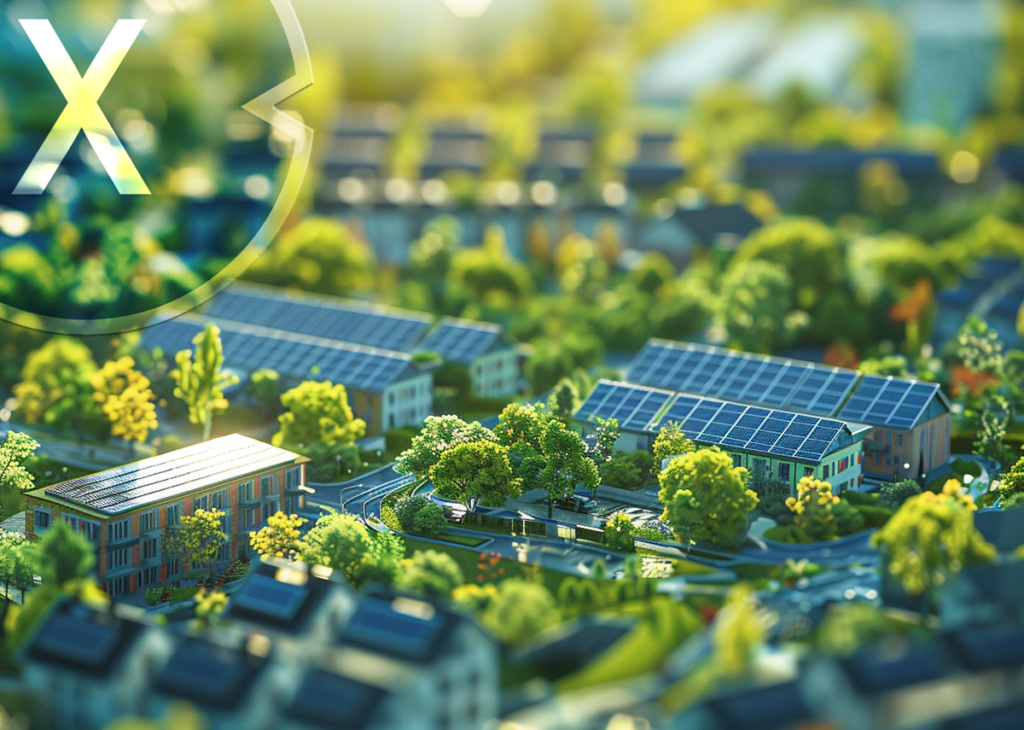
Direct marketing vs. fixed feed-in tariffs - From fixed tariffs to flexible markets: The change in the marketing of solar power - Image: Xpert.Digital
Direct marketing in photovoltaics not only presents challenges but also opportunities, especially for operators who are prepared to actively engage with the electricity market and benefit from dynamic price developments. However, the decision for or against direct marketing should always be made taking into account the individual operator profile and market developments.
More about it here;
- Warehouses, production halls and industrial halls with their own power source from a photovoltaic roof system - Image: NavinTar|Shutterstock.com
- Industrial plant with its own power source from an outdoor photovoltaic system - Image: Peteri|Shutterstock.com
- Plan solar systems with photovoltaic solutions for freight forwarding and contract logistics
- B2B solar systems and photovoltaic solutions & advice
- Plan photovoltaics for warehouses, commercial halls and industrial halls
- Industrial plant: Plan a photovoltaic open-air system or open-space system
- Plan solar systems with photovoltaic solutions for freight forwarding and contract logistics
- B2B solar systems and photovoltaic solutions & advice
We are there for you - advice - planning - implementation - project management
☑️ Construction and advice on photovoltaic open-space systems
☑️ Solar park planning ☑️ Agri-photovoltaic implementation
☑️ Solar outdoor systems with dual-use solutions
Xpert.Solar is your ideal partner for the planning, consulting and construction implementation of ground-mounted photovoltaic systems and agricultural photovoltaic projects due to our many years of experience and expertise in the solar energy industry. Xpert.Solar has an experienced team of professionals that offers tailored solutions to farmers and investors. From location analysis to financial and legal advice to technical implementation and monitoring, Xpert.Solar supports its customers professionally and reliably to ensure successful and sustainable implementation.
I would be happy to serve as your personal advisor.
You can contact me by filling out the contact form below or simply call me on +49 89 89 674 804 (Munich) .
I'm looking forward to our joint project.
Xpert.Digital - Konrad Wolfenstein
Xpert.Digital is a hub for industry with a focus on digitalization, mechanical engineering, logistics/intralogistics and photovoltaics.
With our 360° business development solution, we support well-known companies from new business to after sales.
Market intelligence, smarketing, marketing automation, content development, PR, mail campaigns, personalized social media and lead nurturing are part of our digital tools.
You can find out more at: www.xpert.digital - www.xpert.solar - www.xpert.plus



